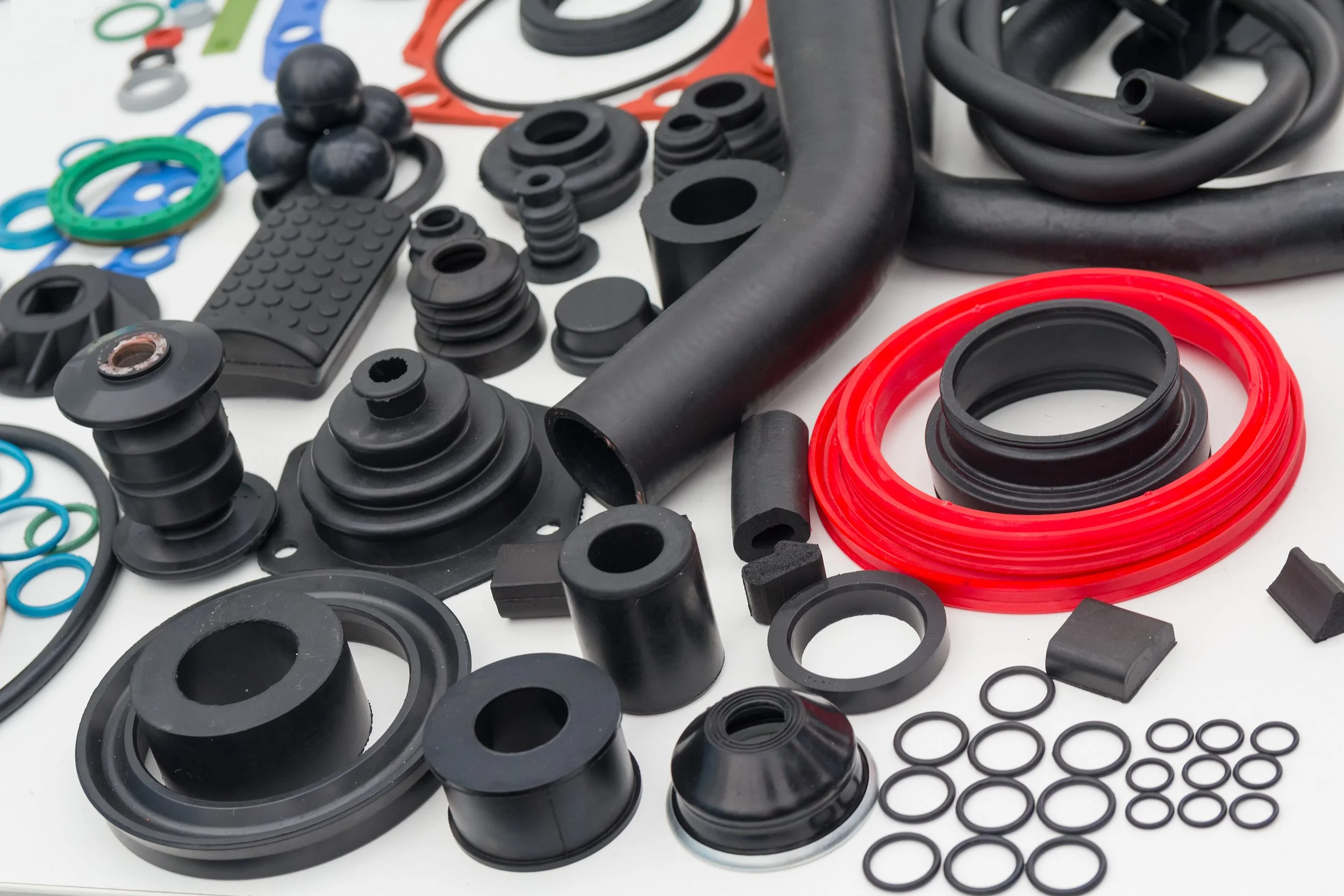HVAC Rubber Components for Ventilation Systems
How Rubber Components Enhance HVAC System Performance
In the world of heating, ventilation, and air conditioning (HVAC), performance and reliability aren’t just nice-to-haves — they’re essential. Whether in a domestic home, commercial office, or industrial plant, HVAC systems need to function efficiently, quietly, and safely. One often-overlooked hero in these systems? Rubber components.
From flexible seals to vibration-reducing mounts, rubber parts are essential to the smooth operation of HVAC and ventilation systems. In this post, we’ll explore how rubber is used, where it’s used, and why it matters.
The Key Rubber Components in HVAC Systems
1. Seals and Gaskets
Rubber gaskets and seals are found wherever there are joints between components — ducting, vents, housings, and more. Their primary role is to ensure the system remains airtight. Poor sealing can lead to:
Air leakage
Increased energy consumption
Loss of system pressure
Materials like EPDM are commonly used for these applications thanks to their durability and weather resistance.
2. Vibration Isolation Mounts
HVAC units — especially compressors and fans — generate a lot of vibration. Over time, this movement can cause wear, fatigue, and noise issues. Rubber isolation mounts absorb and dampen vibration, protecting both the unit and the structure it’s mounted to.
3. Flexible Rubber Connectors
Air handling units and ductwork often need to accommodate slight movements — from thermal expansion to structural shifts. Rubber connectors allow for this flexibility while maintaining a seal, preventing stress cracks and damage.
4. Insulating Pads and Liners
Rubber also plays a role in thermal and acoustic insulation. Pads and liners made from rubber or rubber-composite materials help reduce:
Heat transfer through duct walls
Noise from fans, motors, and airflow
5. Rubber Feet and Supports
Rooftop and floor-mounted HVAC units often sit on rubber feet or support pads, which help to:
Distribute weight evenly
Absorb shock and vibration
Prevent corrosion from contact with ground surfaces
Why Rubber Is Ideal for HVAC Applications
Rubber offers a range of physical properties that make it ideal for HVAC use:
High durability
Flexibility
Airtight sealing performance
Resistance to UV, ozone, moisture, oils, and chemicals
Noise and vibration reduction
Depending on the environment, different rubber materials may be chosen — Neoprene for oil resistance, Silicone for extreme temperatures, Nitrile for gas exposure, or EPDM for weathering.
Real-World Applications Across Industries
You’ll find rubber components in all types of HVAC and ventilation systems, including:
Domestic heating systems: boiler seals, radiator gaskets, fan dampers
Commercial offices: flexible duct connectors, fan coil unit mounts
Industrial settings: high-performance gaskets in extraction or clean room systems
Rooftop AHUs (Air Handling Units): support pads, sealing strips, vibration isolators
Whether it’s a small split system or a large-scale industrial plant, rubber plays a vital role in ensuring these systems operate smoothly and efficiently.
Custom Rubber Solutions for HVAC Installers and OEMs
Every project is different — and off-the-shelf parts don’t always cut it. That’s where custom rubber components come in.
At Atlantic Rubber, we provide:
Bespoke gaskets and seals tailored to your exact sizes and tolerances
Bulk manufacturing with fast lead times for OEMs and contractors
Material options like EPDM, Silicone, Neoprene, and Nitrile
Choice of hardness, colour, finish and temperature ratings
Whether you need 10 units or 10,000, we’ve got the capabilities to deliver — and the technical knowledge to get it right.
Choosing the Right Rubber for the Job
Selecting the correct material is critical. Here are a few key factors to consider:
| Factor | What to Ask | Recommended Material |
|---|---|---|
| Temperature Range | Will the part be near heat sources or outdoors? | Silicone or EPDM |
| Chemical Exposure | Will it come into contact with oils, refrigerants, or cleaners? | Nitrile or Neoprene |
| UV Resistance | Is it used externally or in sunlight? | EPDM |
| Flexibility Needs | Will it need to bend or compress? | Silicone or Natural Rubber |
| Vibration Damping | Is it for mounting equipment or fans? | Neoprene or NR |
Need help choosing? Our technical team is happy to assist with material selection, prototyping, and testing.
Why Partner with a UK Rubber Supplier?
At Atlantic Rubber, we manufacture and supply high-quality rubber components to HVAC installers, manufacturers, and maintenance teams across the UK.
Why choose us?
Fast delivery from our UK base
Low minimum order quantities
Precision manufacturing for complex jobs
Friendly service and technical support
We understand the unique needs of the HVAC sector and pride ourselves on being both dependable and flexible.
Conclusion: A Small Part That Makes a Big Difference
Rubber components might be small, but they play a crucial role in making HVAC systems efficient, quiet, and long-lasting. From gaskets and seals to mounts and connectors, the right rubber part can enhance performance, lower energy costs, and minimise maintenance issues.
Have a question for us?
We’re always happy to help. If you have a question about our products, services or simply want to check in with us, we’re happy to help.


